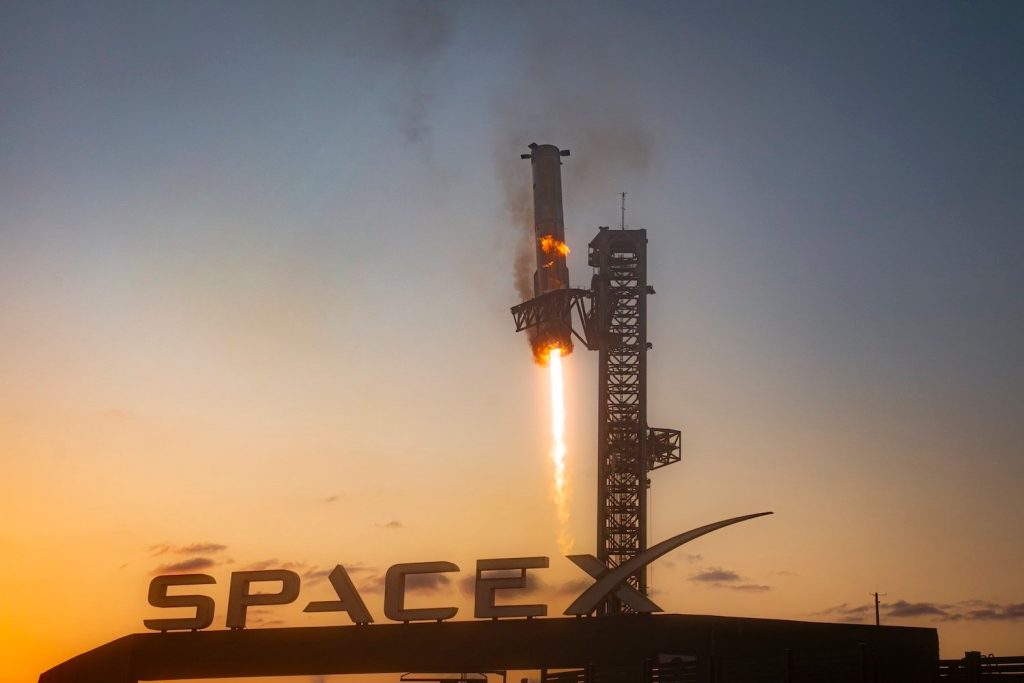SpaceX has big plans for its Starship rocket. After a groundbreaking test flight, in which the landing tower caught the booster, the company’s founder and CEO Elon Musk wants to see the megarocket fly up to 25 times next year, working its way up to a launch rate of 100 flights per year, and eventually a Starship launching on a daily basis.
Just over a month after launching Starship and catching the rocket’s booster with giant mechanical arms, SpaceX is getting ready to do it again as it aims for more frequent flights of the super heavy launch vehicle. “Elon would say, next year he would love to have us have 25 missions a year and in the next few years, a hundred,” Kathy Lueders, general manager of SpaceX’s Boca Chica operations, said during the Mexico Space Agency’s National Congress of Space Activities conference. “He was telling me, ‘Kathy, I would love to launch a couple of times a day,’…big dreams.”
By comparison, SpaceX’s Falcon 9 has already launched 100 times this year, but it’s a tried-and-true rocket that’s been around since 2010. Starship is still under development and undergoing steady modifications, so the goal of 25 launches in 2025 is very ambitious. That amounts to nearly one launch every two weeks. That’s a big ask.
Musk has always dreamed up ambitious timelines for his rocket company, but the billionaire has frequently complained about regulatory restraints that have prevented him from accomplishing them. Last month, SpaceX applied to modify its existing license for Starship launches from the Boca Chica site in Texas, requesting that the Federal Aviation Administration (FAA) increase its launch and landing cadence up to 25 times. The FAA is evaluating SpaceX’s request and analyzing the environmental impact of Starship on the launch site.
SpaceX has previously complained that the FAA is holding Starship back. “Starships need to fly. The more we fly safely, the faster we learn; the faster we learn, the sooner we realize full and rapid rocket reuse,” the company wrote in a blog post earlier this year. “Unfortunately, we continue to be stuck in a reality where it takes longer to do the government paperwork to license a rocket launch than it does to design and build the actual hardware.”
Starship lifted off on Sunday, October 13, at 8:25 a.m. ET from SpaceX’s Starbase facility in Boca Chica, Texas for the rocket’s fifth test flight. For the first time, Starship’s Super Heavy 232-foot-tall (71 meters) booster gently came down towards a special tower, named Mechazilla, with extended mechanical arms that caught the rocket like a giant pair of chopsticks.
SpaceX is ready to see its rocket fly again, aiming for Monday, November 18 for Starship’s sixth test flight. This will be another suborbital flight, and SpaceX will attempt another Starship booster catch, as well as reigniting one of its Raptor engines in space for the first time and carrying out maneuvering tests for its reentry and descent. This should mark the quickest turnaround of a Starship test flight, with the rocket launching again just over a month after its last launch, an indication that SpaceX is stepping up its launch rate as it seeks to push Starship towards regular operations.
“We want to continue to understand the flight dynamics on Starship,” Lueders said during the conference. “In particular, you want to make sure that we can really control an orbital vehicle before we have it go orbital. These next few missions are … making sure we get that figured out.”
In terms of what happens next, SpaceX may still need to continue its fight against regulatory bodies to see its rocket fly that frequently by next year. That fight may take on a new form by next year as Donald Trump returns to office for his second term, with Musk by his side as the head of the Department of Government Efficiency. Musk’s appointment in the U.S. government might move Starship along faster, but likely with some serious environmental and safety repercussions.

